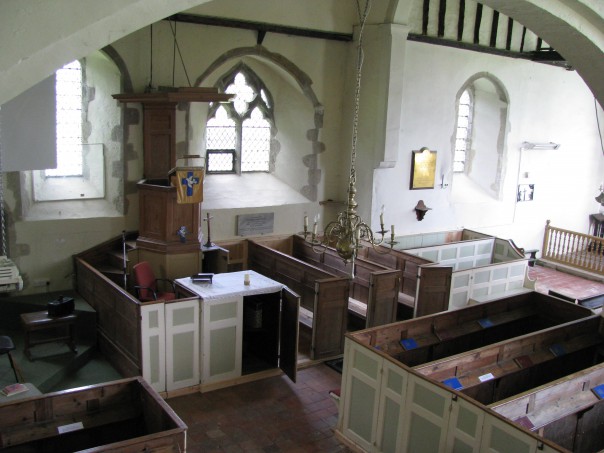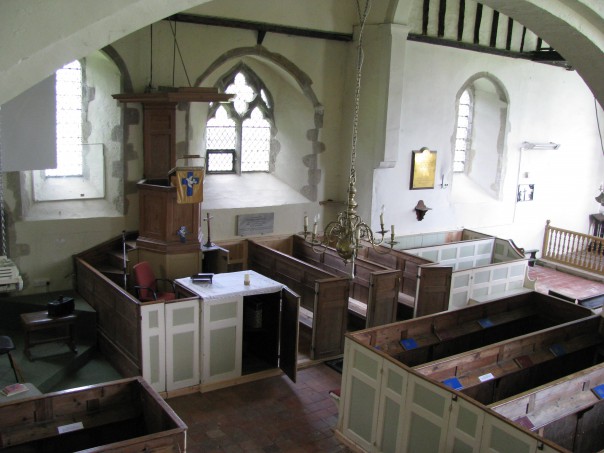This has been another busy week regarding putting arrangements in place for the ‘Richborough through the Ages’ conference that will take place at Old Sessions House, Canterbury Christ Church on Saturday 25 June. To give you a taste of what looks to be a very exciting day, I’m going to run through the speakers and their topics here.

Photo: Imogen Corrigan
The first session features two well-known archaeologists from east Kent: Keith Parfitt of Canterbury Archaeological Trust and Ges Moody from the Trust for Thanet Archaeology. Keith will be discussing the results of an investigation conducted in 2007 that involved extensive trenching across the full width of the island, from Ash Level to the Goshall Valley. This work was particularly valuable because it provided an overview of Richborough island, that is extending beyond the area of the Roman fort, and offered evidence of a major late Roman settlement on the south side of the island. To complement Keith’s examination of Roman occupation, Ges Moody will focus on how the physical landscape has changed over time. He will draw on published works, including those that employ modern geographic techniques and methods of representation, to demonstrate the importance of these developments. He will also explore how this growing appreciation of geography and landscape can inform our understanding of historical events, in this instance the Roman invasion and the arrival of the Anglo-Saxon people. Thus it will become clear that landscape cannot be treated as static, rather it needs to be seen as dynamic as the processes of form and function alter and influence our understanding of events in the historic landscape.
Following a coffee break, the next session will bring together two lecturers from History at the Centre: Drs Paul Dalton and Lesley Hardy. As the medievalist Paul will look beyond the massive Roman walls of Rutupiae that still survive today and must have been even more impressive in the Middle Ages, to examine what is known about Richborough’s medieval past. This is important because with certain exceptions much of its history during this period is not well understood. Focussing on the late Anglo-Saxon and early Norman era, Paul will offer insights into this aspect of the area’s rich history. In contrast, and taking her cue from Rosemary Sutcliff’s 1959 novel The Lantern Bearers that is set in the chaotic last years of Roman Britain, Dr Lesley Hardy will explore Sutcliff’s work and influences. In particular, she will investigate the power of Richborough and other Roman sites as an inspiration for historical imagination and national identity in the uncertainties of post-war Britain.
After lunch we will move into the modern era for a session on Richborough during the Great War. First, Dr Frank Andrews will discuss how the plans for a harbour between 1900 and 1914 to serve the development of the east Kent coalfield were taken over in 1916 by the War Office to provide a massive port to supply the British army in northern France. This war-time construction resulted within months in the establishment of a town of 19,000 men and sixty or so miles of railway track and hundreds of yards of quay – Richborough the ‘Mystery Port’. Using his recent research on Richborough during the same period, Dr Martin Watts will discuss the history of this Great War port using the reports produced by Colonel W. H. Briggs for Eastern Command. The second of these reports labelled ‘Confidential’ sparked a row between the War Office and Eastern Command, which is perhaps not surprising considering Martin has discovered a story of extravagance and command confusion over the development of Richborough. Nevertheless, as he outlines, the rapid completion of the port facilities was a vital component of the British war effort in France and Flanders.
The final session will give participants insights into the area during the inter-war years and the early years of the Second World War. Dr John Bulaitis will begin the session by highlighting the career of one the local landholders G. C. Solley. In addition, Solley was the most prominent figure in Sandwich political and cultural life in the period. Moreover, as well as serving as mayor, alderman and JP, he was the chairman of the East Kent Chamber of Commerce. Yet it is his position in the Canterbury Farmers’ Club and his activities in the early 1930s as a leader of the local farmers in a campaign against the Tithe Rent Charge that is probably most noteworthy. As a political activist his involvement in these disputes also led him to join Oswald Mosley’s British Union of Fascists in 1934, an action that, as John Bulaitis reveals, offers considerable insights into inter-war local, regional and national politics. The final lecture will be given by Professor Emeritus Claire Ungerson. She will assess the topical issue of refugees, in this case Jews from Germany who were housed at Richborough in 1939/40. These 4000 German-speaking Jewish men were accommodated at Kitchener Camp (one of the seven camps at Richborough), in many cases having come straight from concentration camps to which they had been taken after the Kristallnacht pogrom in November 1938. The Kitchener camp was rented by the Central British Fund for German Jewry and the rescue was organised and funded by them in exactly the same way as the Kindertransports which the CBF also funded. Professor Ungerson will present the story of this rescue and also consider the response of the people of Sandwich to this sudden influx of a large number of ‘foreigners’ into the locality.
As I hope you can see this offers a range of very interesting talks, a feast to follow the Canterbury Medieval Weekend in early April. This too is progressing well and all the tours of medieval buildings in Canterbury are now fully booked. In addition the lectures are filling up, so if you have not booked yet I would recommend you consider doing this soon. And before I end I’ll just mention Dr David Coast’s talk to staff and postgraduates from both Canterbury universities that took place on Monday evening. Dr Coast, from Bath Spa University, offered a clear and interesting assessment of the role of printed and hand-written pamphlets in the 1620s as a commentary on the kingship of James I. This often scurrilous literature highlighted what were said to be general fears regarding the tyranny of popery, the influence of poor counsel and the dangers of foreigners, especially ambassadors. Often the ‘hero’ was the honest, plain-speaking ploughman, perhaps a throwback to Langland’s Piers the Plowman, yet that in itself highlights an interesting trope at a time of the growth of the middling-sort yeoman and the increasing incidence of enclosure in some part of England. Consequently, David’s paper raised some intriguing questions about the role and manipulation of public opinion through the production of cheap pamphlets and the inter-relationship between producers and audience – altogether a very satisfying week for the Centre.
 Centre for Kent History and Heritage
Centre for Kent History and Heritage Sheila Sweetinburgh
Sheila Sweetinburgh 381
381


